Kitchen Pass Through Window Ideas For Entertaining
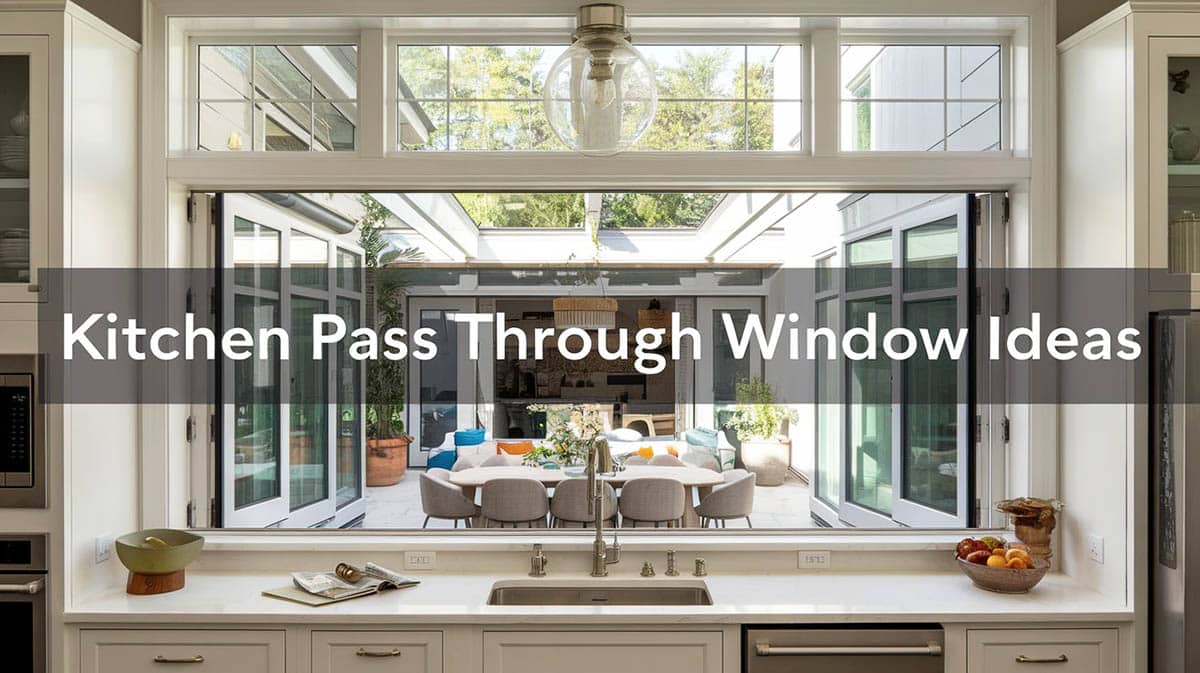
Kitchen pass through windows have been traditionally installed indoors, to easily serve or transfer food from the kitchen to the dining area. It’s a simple design solution that simply involves making an opening through a wall or a door and adding a small window large enough for food and dishes to pass through.
More contemporary applications of the kitchen pass through window involve connecting the kitchen to the outdoor areas. Not only does it allow additional ventilation and light for the kitchen, but this is also the perfect idea if you don’t have the space for an outdoor bar, but would like to efficiently serve food and drinks in your backyard or porch. These can also be often found in restaurants, allowing kitchen workers to directly send food orders to the counter or food servers without leaving the kitchen.
Types of Pass Through Windows
Different types of windows can be used as kitchen pass-through casement. The appropriate type will depend on the design of the space, and the available wall space of the installation, budget, and personal preference. Here are the most common pass through windows used:
Awning Window – These are a great choice especially for those located in tropical countries or anywhere with constant rains and monsoons. These are available in a variety of sizes and designs. The large, modern style awning windows would have hydraulic technology so you can easily lift the casement open or close as needed. When open, the framed design also serves as a canopy.
Swing Up Window – Swing up and awning windows could often be confused because both technically “swing upwards”. The main difference is that awning windows swing OUTWARDS, while swing up windows swing INWARDS.
This option is good if you don’t have any overhead shelves, lamps or cabinets that will block the way of the casement. This is also an ideal option if you current window opening is a casement type with a sill, where it would be difficult to install an awning casement.
Pocket Window – If you don’t want open windows to obstruct anything indoors or outdoors, or if you are simply short on space, a pocket casement might be the perfect option. This is easy to install on drywall, and such design allows your windows to slide “inside” a pocket hidden between the walls for a large and obstruction-free opening.
Garage Door – You can use an existing garage door track to convert it into a pass-through casement as well! A little bit of DIY skills would be needed to complete this, but is very doable!
Accordion Window – This type of casement slides to either one or two sides of the frame. Accordion windows is especially ideal if you have a bigger or wider area where you need a pass-through. This is usually the choice for bigger openings.
When looking for kitchen pass through casement ideas its best to consider your home’s layout to determine the style for you. You can try using kitchen design software to enter your exact specifications and visualize your ideas.
Window to Outside Patio
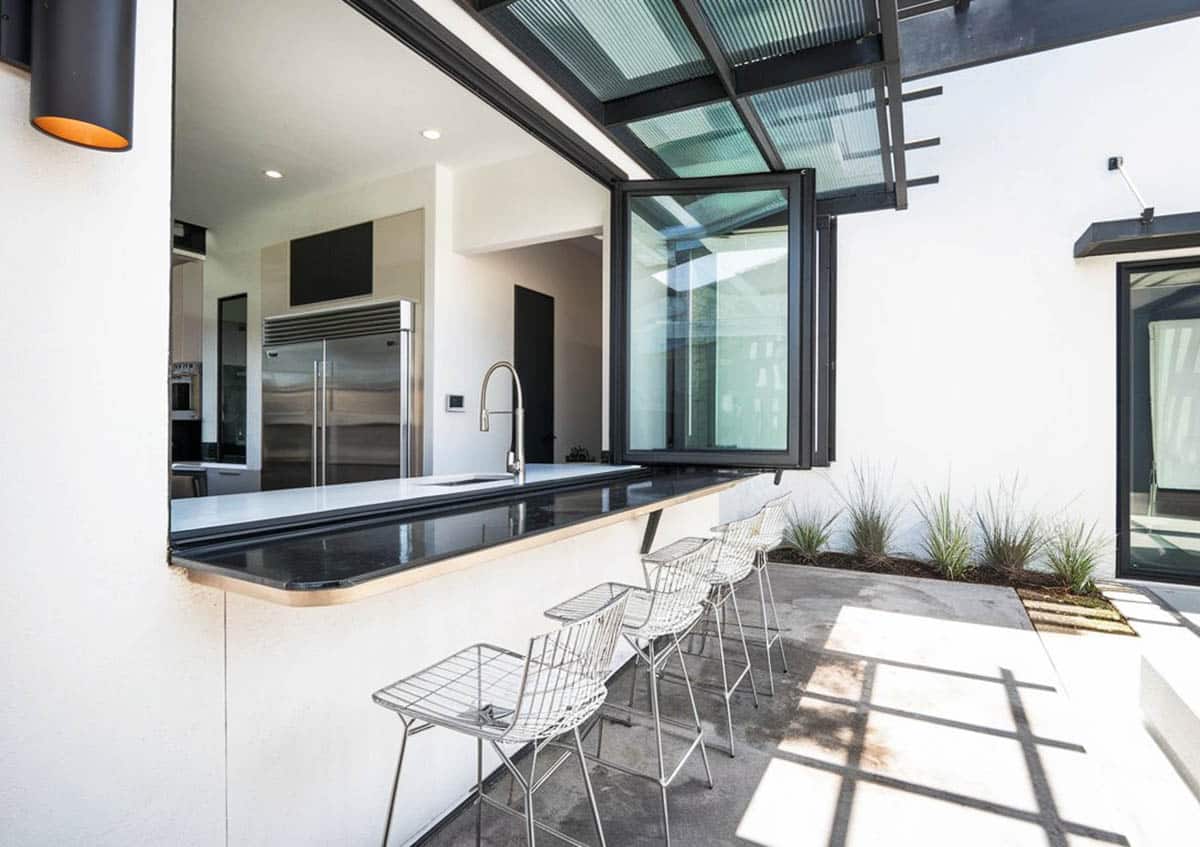
This example shows an accordion kitchen pass through that folds outwards. On the edge of the casement opening, a metal-framed bar ledge was installed and fixed with barstools for an instant outdoor bar area. Even when closed, you can still make use of the bar ledge as a small dining area or food serving/preparation station.
This window is very wide, so an accordion-type window was used. This allows you to fully utilize the whole width of the opening. Smaller window widths can also be used in the accordion style. Because they are often installed by the sink, the accordion folds outwards so it doesn’t hit the faucet.
If you don’t like the obstruction of folded windows from an accordion window, the canopy, or an awning window or cannot use a swing-up window for your space, you can also consider a slide-up window as used in this galley kitchen. This allows you to still give efficient access between the outdoor area and the cooking area, and allows a wide window opening as well, but sacrifices a bit on the opening height.
Pass through windows work just as well on U-shaped kitchens as they do with any galley or L-shaped kitchen. The large opening helps make the kitchen feel less stuffy or small and also helps efficiently serve food and dishes from kitchen to dining and vice versa. For those who wish to remove the wall to open up the space there are kitchens with columns that still provide support for the ceiling without adding costly beams overhead.
Space is really a challenge in apartment buildings or flats and because they often get little if any sunlight because of their location, it tends to look dark and stuffy. By creating a large opening on the drywall, we allow natural light to seep into the small kitchen. An added countertop ledge also adds more function to the opening by utilizing it as a breakfast bar.
Dining Area to Kitchen
The traditional use of pass through windows is to connect the kitchen to the dining area, whether it may be a residential space or a restaurant. By creating a large opening in the wall and extending the countertop past the opening, a small breakfast bar can be created, in addition to connecting the cooking to the dining area. The countertop is the same height as the opening, so you don’t need to add extra cut or stone material as you would if you want a bar height pass-through.
One way to make your pass-through opening more functional is by adding a ledge or a counter surface where you can lay down food and drinks. Take the extra mile and use a durable material, such as natural stones to make it more functional and elegant. The ledge in this example has been extended outwards to provide more knee space as well.
Pass-Through Kitchen Peninsula
When designing kitchens, there’s usually a tough choice you have to make: having more storage space vs having more natural lighting. If we could have the best of both worlds or at least a balance between the two, it would be a dream come true!
If you only have a small cooking space, the best option is to keep it open so that it doesn’t feel or look too enclosed. Some prefer having “divided” spaces in their homes, but that doesn’t necessarily mean you need walls in between. One can have a kitchen with a peninsula counter to divide the space from the living room. The design creates a large “pass through” opening between the cooking space and the living and dining area.
When working with existing buildings or houses, the best practice when installing new windows and openings is to follow the original style of the architecture, as much as possible. To keep in theme with the original architectural style, the pass through can be installed to match the rest of the windows. Visit this link to see more dining room ideas.

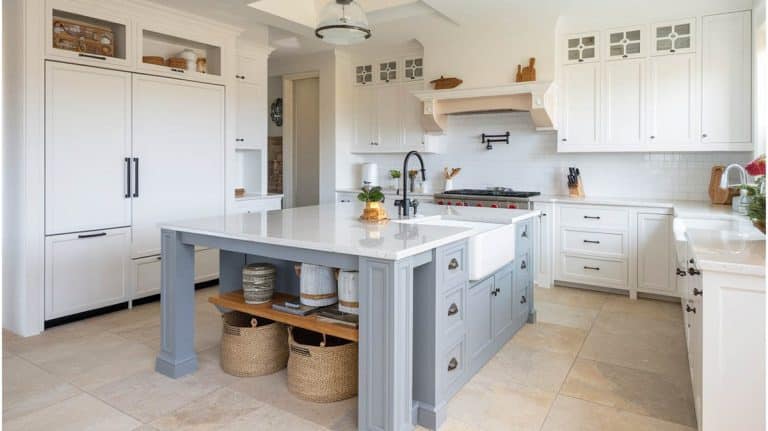
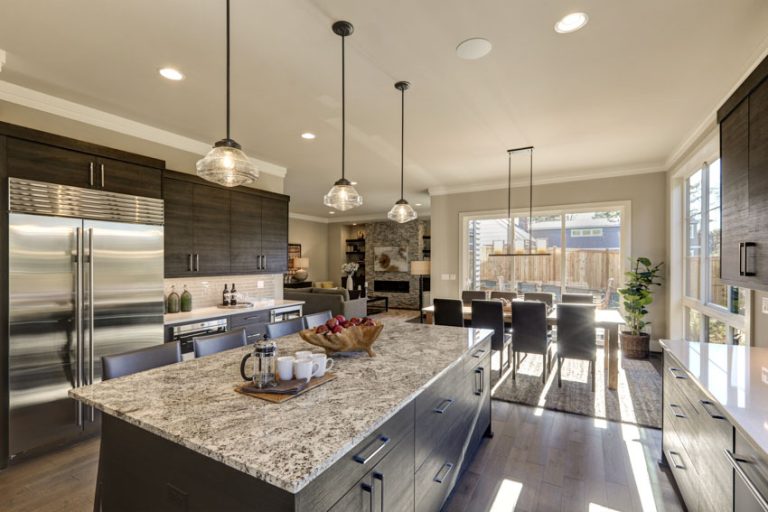
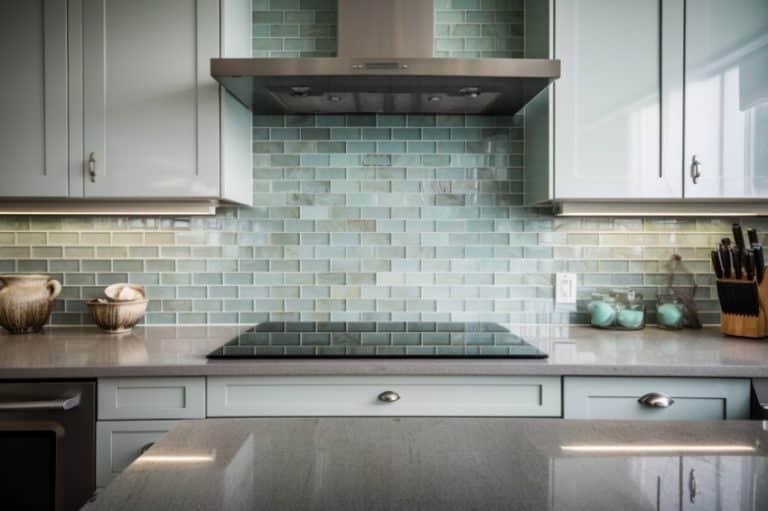
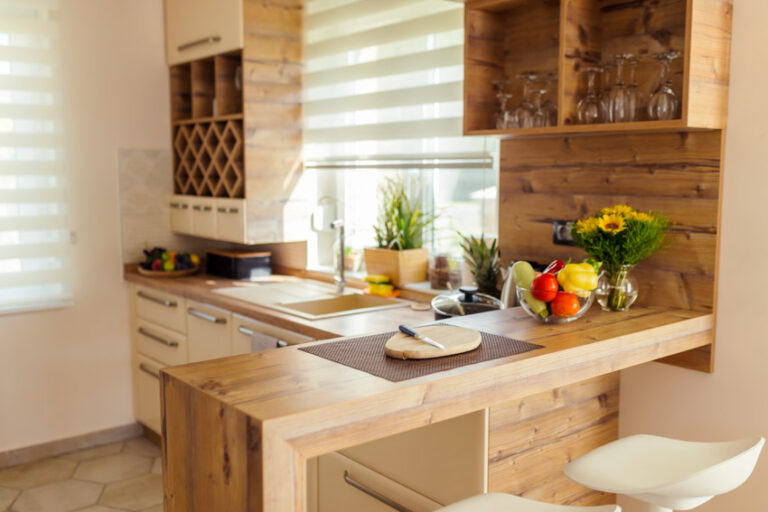
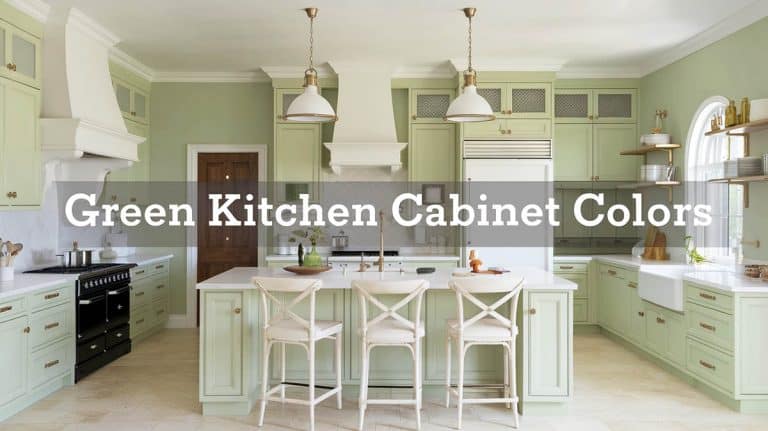

I am interested in the pass-through awning window type of window. Maybe 6ft wide by 3.5 ft high. Do you happen to have a list of manufacturers that carry these type of windows ?
I don’t have an extensive list for manufacturers for that specific size, however here are a few you can check out. Andersen provides a variety of pass-through windows to choose from. Marvin is known for their push-out awning windows. Optvue focuses on pass-through windows. Thank you for the question.